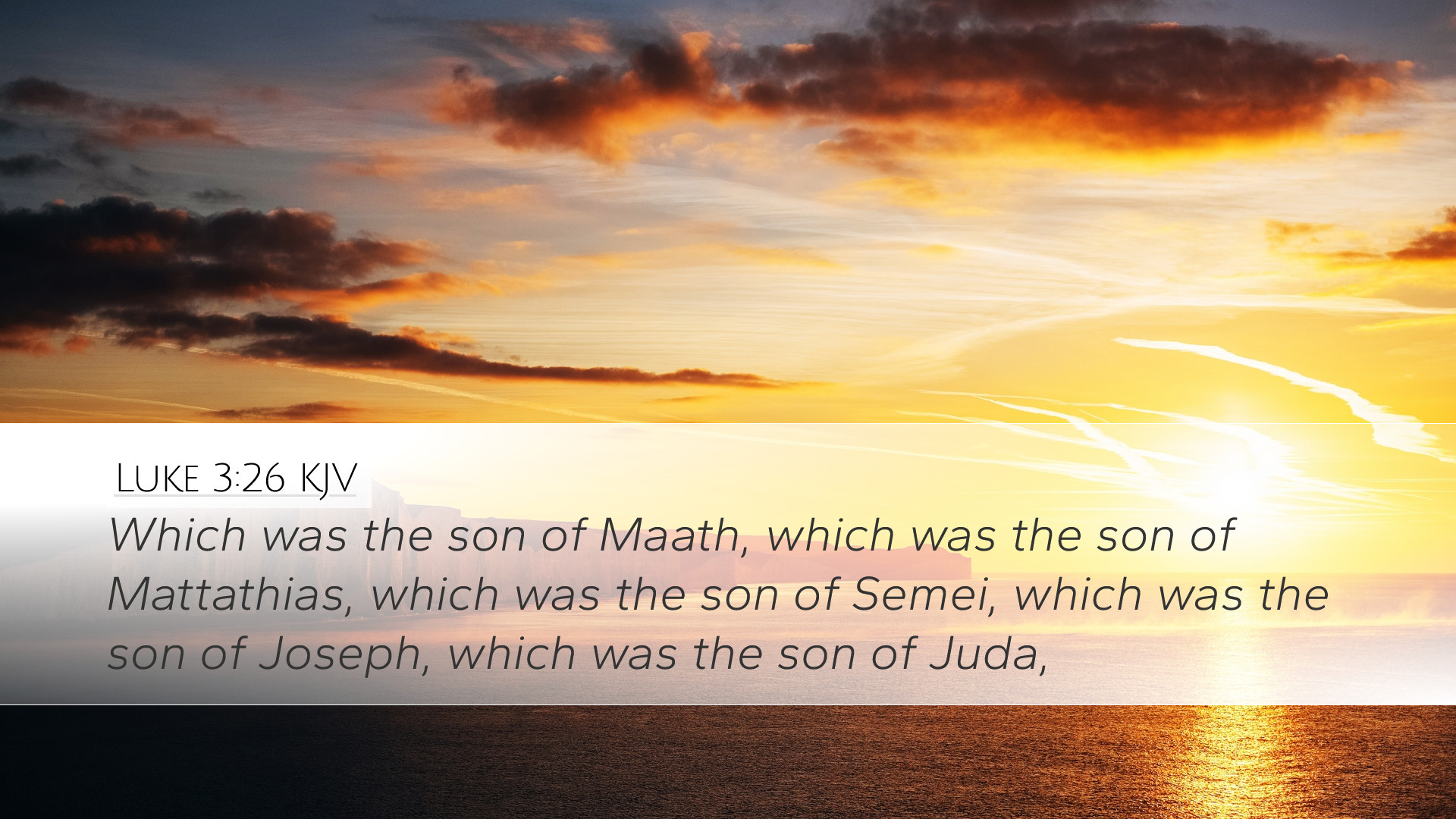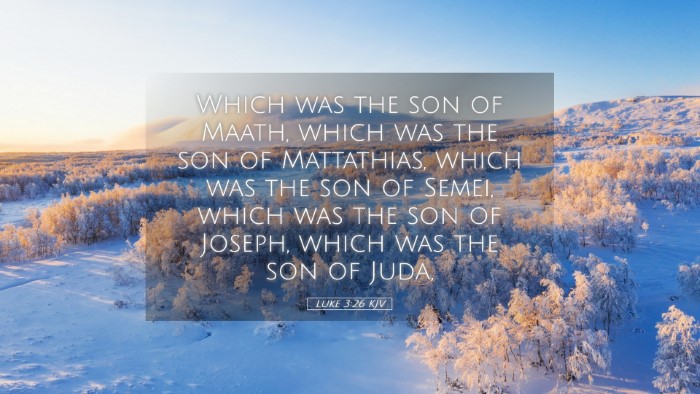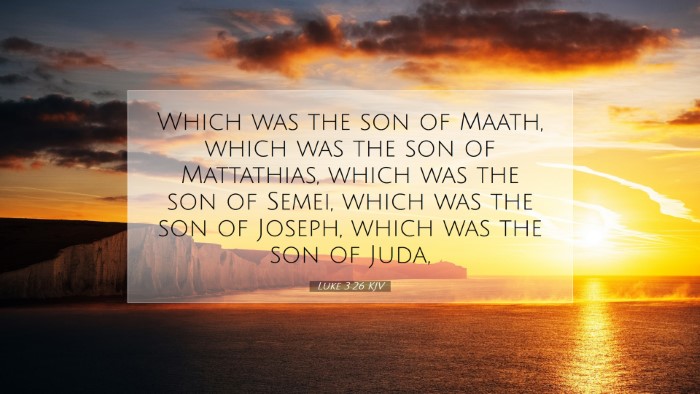Commentary on Luke 3:26
In Luke 3:26, the genealogy of Jesus continues through a complex lineage, detailing
the ancestral connections that define His earthly origin. This verse is part of a larger
section that traces the lineage of Christ, seeking to demonstrate His rightful place
in the history of Israel as well as His divine mission. The profound implications of
genealogies in Scripture, particularly in the New Testament, reveal not only historical
facts but also theological truths critical for understanding Christ's identity and mission.
Contextual Background
The genealogies of Jesus are found in both Matthew (1:1-17) and Luke (3:23-38).
Each genealogy serves a distinct purpose; while Matthew emphasizes Jesus' royal lineage
through David to establish His messianic claims, Luke provides a more universal perspective
that highlights Jesus' connections to all humanity.
Insights from Matthew Henry
Matthew Henry emphasizes the significance of genealogy in establishing the credentials
of Jesus as the Messiah. He notes that tracing Jesus' lineage back to David confirms the
prophecy concerning the Messiah's royal line. Furthermore, Henry points out that the
inclusion of various figures in the genealogy represents God's grace and mercy in using
imperfect individuals to fulfill His redemptive plan.
Insights from Albert Barnes
Albert Barnes focuses on the theological implications of Jesus’ lineage. In this verse,
as part of the broader genealogy, he highlights how Luke includes not just kings but also
humble individuals in Jesus' ancestry, suggesting that Christ comes for all people -
not just the elite. Barnes notes that this inclusivity is a central theme in Luke's Gospel,
reflecting Jesus' outreach to the marginalized and sinners.
Insights from Adam Clarke
Adam Clarke provides an evaluation of the historical and cultural context of the names
mentioned in the genealogical account. He often addresses questions of authenticity and
lineal descent, noting the shift from the paternal ties of Jewish lineage towards a more
comprehensive understanding in the new covenant established by Christ. Clarke underscores
that genealogy in this sense is not merely a record of ancestry but a declaration of
God’s faithfulness throughout generations.
Theological Considerations
-
The Significance of Genealogy:
The genealogy serves to connect Jesus to the promises made to Abraham and David,
reaffirming God’s covenantal faithfulness. It reflects the unfolding of redemptive history,
centering on Christ as the ultimate fulfillment of these promises.
-
Fulfillment of Prophecy:
Jesus' descent from various significant figures illustrates the fulfillment of Old
Testament prophecies regarding the Messiah, specifically those addressing His lineage.
-
Universal Appeal:
Luke’s genealogy traces back to Adam, signifying that Jesus came not only for the Jews
but for all humanity, which aligns with the overall mission of the Gospel.
-
Divine Sovereignty in History:
Each name in the lineage reveals God's sovereignty in working through history and
using individuals, regardless of their background, to realize His divine plan.
Practical Applications for Theology and Ministry
Understanding Luke 3:26 and the surrounding genealogy is crucial for pastors, theologians,
and students as it exemplifies key theological truths that should inform their teaching
and preaching. The recognition of God's redemptive work through a diverse lineage reinforces
the message of grace and the importance of evangelism across cultural and societal boundaries.
Additionally, such an understanding fosters humility within ministry contexts,
encouraging leaders to remember that God often works through those we least expect to
fulfill His purposes. The genealogy invites reflection on the broader narrative of Scripture,
reminding believers today of their place in God’s ongoing story of redemption.
Conclusion
In conclusion, Luke 3:26, while one verse among many in a lineage chart, opens
a window into the depth of Christ's identity and the expansive reach of the Gospel. Insights
from biblical commentaries add layers to our understanding, encouraging those in ministry
to grasp the rich tapestry of God’s redemptive history, culminating in the person of
Jesus Christ. A thorough comprehension of this lineage equips believers to appreciate the
breadth of God's salvation and challenges them to extend the message of Christ to all.


